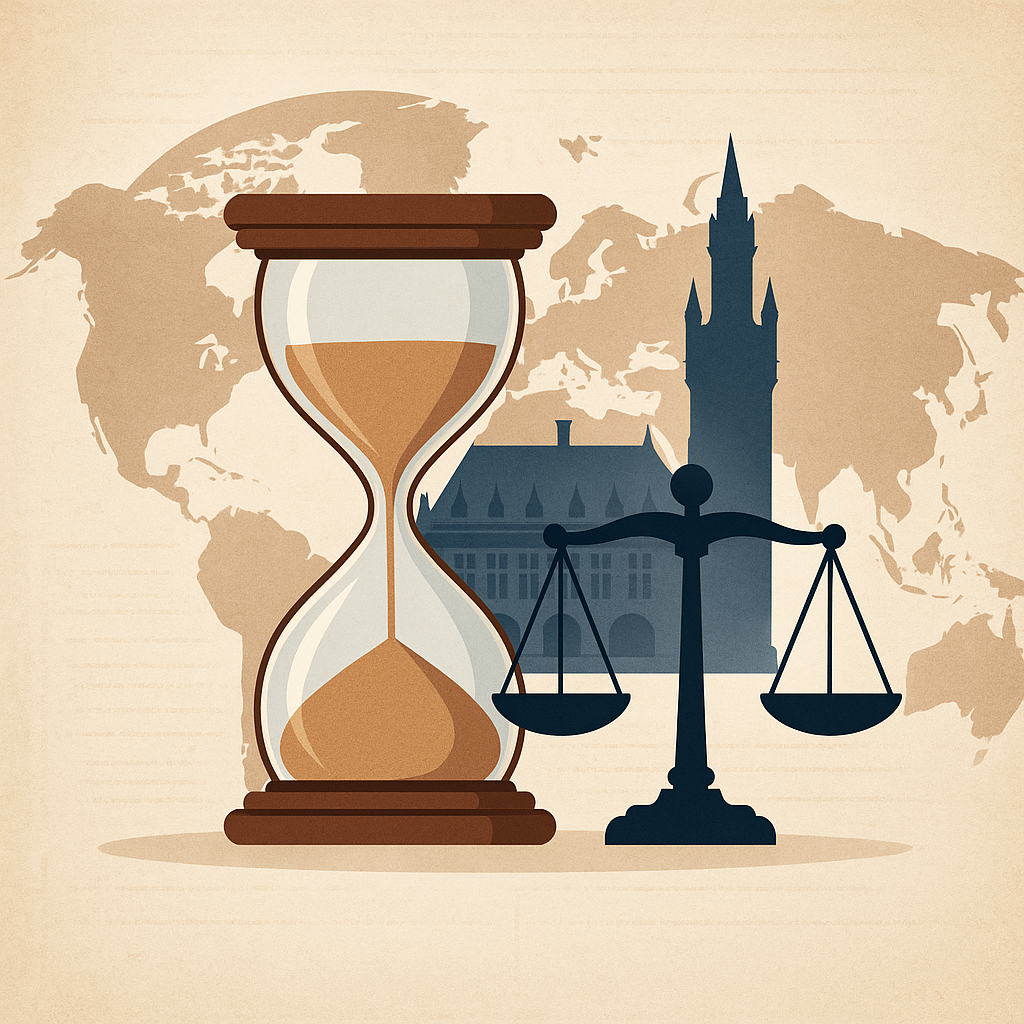Vienna Convention on Diplomatic Relations (VCDR) is the legal document that codifies diplomatic relations, meaning the rules for the exchange of embassies between sovereign States. The Convention was signed on 18 April 1961. With 192 signatories, VCDR is one of the most successful documents ever drafted under the United Nations framework. Its success may also be attributed to the fact that sovereign states have been establishing and maintaining diplomatic relations for the last 200 years.
Even though the world has radically changed in the last 200 years, the basic functions of embassies such as representing the sending State, protecting its nationals and its interests remain the same. In this article, I will explore two key events that provoked discussions regarding the VCDR in the last 60 years of its reign while also examining key provisions relating to those events. The two events are the United States Diplomatic and Consular Staff in Tehran Case seen by the ICJ in 1980 and the more recent case of Julian Assange.
Tehran Case before the International Court of Justice
The United States Diplomatic and Consular Staff in Tehran Case (hereon Tehran Case) was seen by the ICJ in 1980. The case concerned was brought before the Court by the United States regarding diplomats that were held hostage in the US Embassy in Tehran on 4 November 1979 by Iranian militants. The case was primarily focused on Articles 22 and 29 relating to the inviolability of diplomatic premises and diplomatic staff, respectively. To understand the Court’s decision one must be familiar with the relevant articles.
Article 22 states that:
“1. The premises of the mission shall be inviolable. The agents of the receiving State may not enter them, except with the consent of the head of the mission.
- The receiving State is under a special duty to take all appropriate steps to protect the premises of the mission against any intrusion or damage and to prevent any disturbance of the peace of the mission or impairment of its dignity.
- The premises of the mission, their furnishings and other property thereon and the means of transport of the mission shall be immune from search, requisition, attachment or execution.”
Inviolability is the status accorded to premises, persons, or property physically present in the territory of a sovereign state while not being subjected to its jurisdiction in the ordinary sense.[1] The receiving State abstains from exercising certain rights including some regarding law enforcement while assuming the responsibility of protecting the premises.
It should be noted that the greatest obstacle in drafting the article was the question of emergency within the premises. In the first draft of the Article, the Rapporteur had included an exemption clause regarding extreme emergencies such as fires. However, this was met with dissatisfaction from the States.[2]
Article 29 states that:
“The person of a diplomatic agent shall be inviolable. He shall not be liable to any form of arrest or detention. The receiving State shall treat him with due respect and shall take all appropriate steps to prevent any attack on his person, freedom or dignity.”
Inviolability of the diplomatic person is the oldest established rule in diplomatic law. This provision is merely a codification of this customary norm.[3] This Article had become a topic of discussion due to fear of terrorist attacks on diplomatic agents. Tehran Case firmly established the responsibility of the receiving State in such cases.
In the end, the Court decided that “This inaction of the Iranian Government by itself constituted clear and serious violation of Iran’s obligations to the United States under the provisions of Article 22, paragraph 2, and Articles 24,25,26, 27 and 29 of the 1961 Vienna Convention on Diplomatic Relations”.[4] The Court accepted that Iran as a receiving State had the obligation of protecting US diplomatic premises under Article 22.[5] This judgment was in line with the principles established in VCDR, further solidifying its legal power.
Ecuador’s Grant of Asylum to Julian Assange
The second situation where VCDR has become the topic of discussion of the international community was the asylum request of Julian Assange. Julian Assange was an activist who founded WikiLeaks, an online platform that shares hacked governmental information. In November 2010, Sweden issued an arrest warrant for Mr. Assange on claims of sexual assault, a crime which is not political therefore requires extradition under international extradition law.[6] While in the United Kingdom, Mr. Assange requested diplomatic asylum by the Ecuador Embassy in London, which was granted after 2 months of considerations.[7] This sparked a conversation about VCDR. Two main questions were raised: Can UK forcefully retrieve Mr. Assange from Ecuadorian Embassy despite inviolability clauses and does Ecuador’s grant of asylum conform to VCDR? I will respectively examine these questions under VCDR.
First, can the UK forcefully enter the embassy to retrieve a criminal? The UK has threatened Ecuador to forcefully enter the embassy to retrieve Mr. Assange, sparking the conversations. As previously demonstrated, Article 22 which deals with the inviolability of the diplomatic premises provides for no exemption clauses. Therefore, at first glance, it is not possible for the UK to forcefully enter the embassy without breaching VCDR and attracting international dissatisfaction. However, as diplomatic premises are often established with the consent of both parties through a bilateral treaty, the UK can revoke this treaty. This would also revoke the inviolability of diplomatic premises, allowing the UK to resort to law enforcement measures. Some scholars have strongly opposed this view.[8] Ending diplomatic relations with a State is indeed a high price to pay to acquire a single criminal. To summarize, the first question’s answer is yes but no.
Second, does Ecuador’s grant of asylum to Mr. Assange conform to VCDR? This question relates to diplomatic asylum. Diplomatic asylum is the term used for when a State grants asylum in its diplomatic premises within the territory of the host State. VCDR does not state an explicit right to grant diplomatic asylum. However, it does not prohibit it either. The preamble of the VCDR states that any matter that is not explicitly regulated by the Convention will be subjected to customary international law. Diplomatic asylum is seen as a rule of regional customary international law by the Latin American States, including Ecuador. However, the UK never recognized such a right of sending States. Therefore, any effort to justify diplomatic asylum by customary international law while there exists widespread State practice against it will be in vain. It should be considered if there is any clause, although not explicit, relating to diplomatic asylum. In fact, during the drafting efforts of VCDR, the diplomatic asylum was one of the issues discussed by the International Law Commission.[9] However, General Assembly decided that the controversial issue of diplomatic asylum was outside the scope of this convention.[10] Therefore, VCDR deliberately avoids codifying diplomatic asylum. As far as the current VCDR is concerned diplomatic asylum relates to article 41 which states:
“1. Without prejudice to their privileges and immunities, it is the duty of all persons enjoying such privileges and immunities to respect the laws and regulations of the receiving State. They also have a duty not to interfere in the internal affairs of that State.
2.All official business with the receiving State entrusted to the mission by the sending State shall be conducted with or through the Ministry for Foreign Affairs of the receiving State or such other ministry as may be agreed.
3.The premises of the mission must not be used in any manner incompatible with the functions of the mission as laid down in the present Convention or by other rules of general international law or by any special agreements in force between the sending and the receiving State.”
The receiving State is obliged not to use the premises in a manner incompatible with diplomatic functions. Article 3 which regulates diplomatic functions list those in a non-exhaustive manner[11]:
“1.The functions of a diplomatic mission consist, inter alia, in:
(a) Representing the sending State in the receiving State;
(b) Protecting in the receiving State the interests of the sending State and of its nationals, within the limits permitted by international law;
(c) Negotiating with the Government of the receiving State;
(d) Ascertaining by all lawful means conditions and developments in the receiving State, and reporting thereon to the Government of the sending State;
(e) Promoting friendly relations between the sending State and the receiving State, and developing their economic, cultural and scientific relations.”
As long as the grant of diplomatic asylum is not incompatible with these functions it is in conformity with Article 41(3). It could also be argued that for Ecuador, diplomatic asylum is also a diplomatic function.
The first paragraph of the same article poses a greater obstacle for diplomatic asylum. According to this paragraph diplomatic agents from the sending States have a duty to respect the laws and regulations of the receiving State. This relates to the territorial sovereignty of the receiving State. When the receiving State opposes, diplomatic asylum is clearly against the territorial sovereignty of the receiving State.[12]
As for the answer to the second question, the answer is no. Ecuador’s grant of diplomatic asylum did not conform to VCDR Article 41.
In the end, the matter was resolved in terms of diplomatic law by Ecuador revoking Mr. Assange’s asylum in 2019 and his arrest by the British police.
To conclude, Vienna Convention on Diplomatic Relations is a powerful legal instrument that has stood the test of time even during times of crisis. It has been through many adversities such as Tehran Case and Assange Case to name a few. However, these cases only made the legal document stronger through rigorous interpretation. VCDR will certainly have a long-lasting effect in international law. Happy 60th birthday to VCDR!
Image: United Nations Office of Legal Affairs
Sources:
[1] Eileen Denza, Diplomatic Law: Commentary on the Vienna Convention on Diplomatic Relations, Oxford University Press, Fourth Edition page 110
[2] Report on Diplomatic Intercourse and Immunities by Mr. A.E.F. Sandström, Special Rapporteur (A/CN.4/91, 21 April 1955) page 11
[3] Denza, Diplomatic Law page 220
[4] Case Concerning United States Diplomatic and Consular Staff in Tehran (United State of America v Iran) (Judgment) [1980] para 67
[5] Tehran Case Judgment para 77
[6] M. Cherif Bassiouni, International Extradition Law and United States Law and Practice, Oxford University Press, Sixth Edition (2014) page 670
[7] https://www.nytimes.com/2012/08/17/world/americas/ecuador-to-let-assange-stay-in-its-embassy.html (Accessed 18 May 2021)
[8] https://www.ejiltalk.org/may-the-uk-terminate-the-diplomatic-status-of-ecuadors-embassy/
[9] Denza, Diplomatic Law page 114
[10] General Assembly Resolution 685 (VII)
[11] Denza, Diplomatic Law page 35
[12] Marteen den Heijer, Europe and Diplomatic Asylum, Hart Publising, First Edition (2012) page 115





